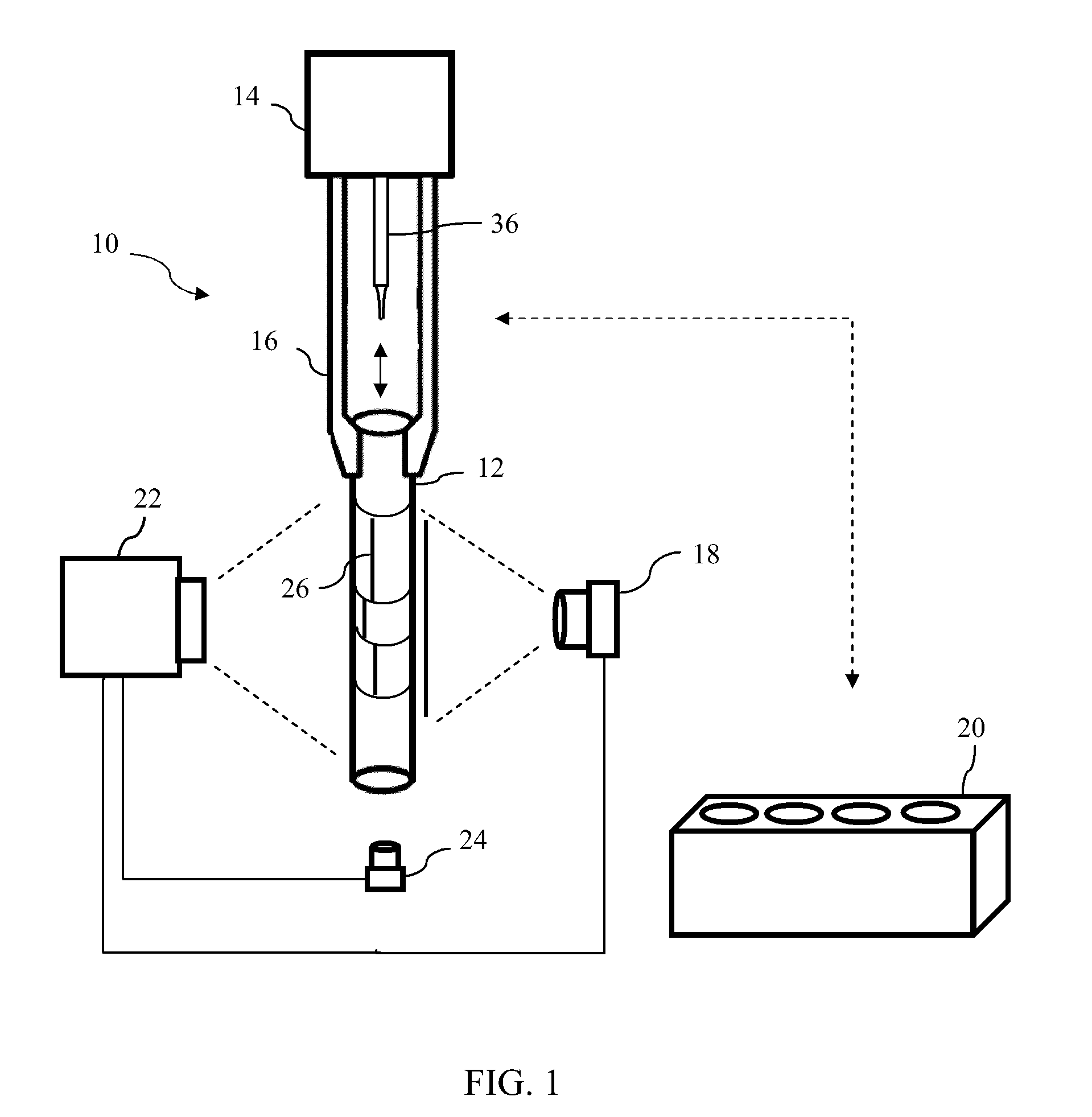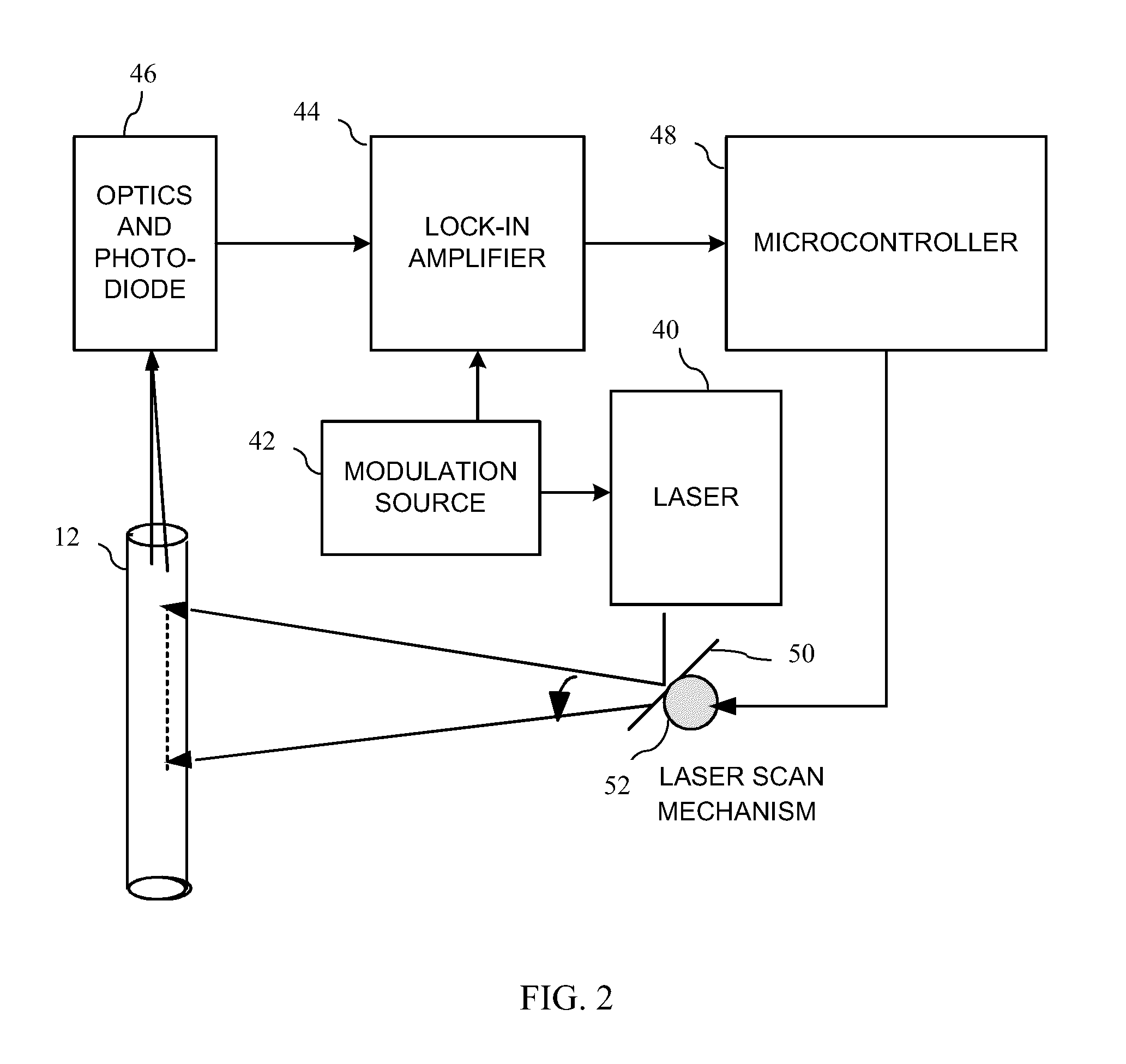System and method for detection of liquid level in a vessel
a technology of automatic identification and liquid level detection, applied in the field of machine vision systems, can solve the problems of inability to determine the type of cap placed on the vessel, inability to provide accurate information, and inability to provide information about sample quality
- Summary
- Abstract
- Description
- Claims
- Application Information
AI Technical Summary
Benefits of technology
Problems solved by technology
Method used
Image
Examples
Embodiment Construction
[0014]Referring now to the drawings, wherein like reference numerals refer to like parts throughout, there is seen in FIG. 1 a machine vision system 10 for determining the level of liquids in a vessel, such as a test tube 12, in connection with a robotic handling system 14 or the like. In general, robotic handling systems are motorized systems having an arm 16 for moving and / or transferring patient sample test tubes 12 between designated locations, such as from a rack 20 to another location or back to rack 20. Patient sample tubes can comprise any variety of test tube or comparable vessel and frequently contain one or more different body fluids, such as blood, urine, etc., treatment and processing fluids, that separate into multiple layers.
[0015]As further seen in FIG. 1, system 10 includes a line generator 18, such as a laser line generator, positioned oppositely from an optical imager 22 and oriented to project its line of light toward imager 22. When the spot from a laser is scan...
PUM
 Login to View More
Login to View More Abstract
Description
Claims
Application Information
 Login to View More
Login to View More - R&D
- Intellectual Property
- Life Sciences
- Materials
- Tech Scout
- Unparalleled Data Quality
- Higher Quality Content
- 60% Fewer Hallucinations
Browse by: Latest US Patents, China's latest patents, Technical Efficacy Thesaurus, Application Domain, Technology Topic, Popular Technical Reports.
© 2025 PatSnap. All rights reserved.Legal|Privacy policy|Modern Slavery Act Transparency Statement|Sitemap|About US| Contact US: help@patsnap.com



